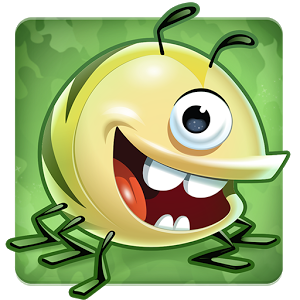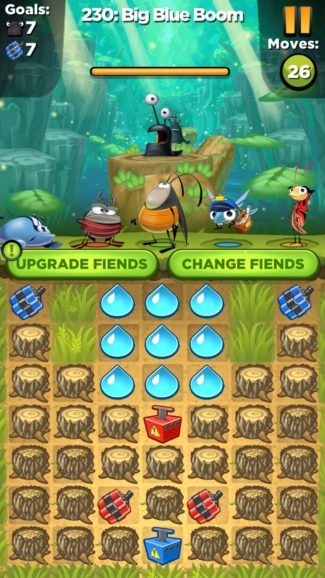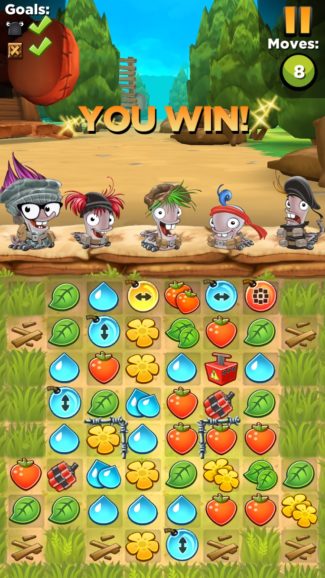Bastion
LQ: 9.15
Recommended Age: 10+
Skills Used: Planning, Working Memory, Mathematics, Reading

In Seriously Digital Entertainment’s Best Fiends, players use “fiends” (insect inspired characters) to rid Minutia of slugs. Players must connect three (or more) of a color to attack slugs and beat the levels. The further the player gets, the more fiends, special attacks, types of fiends, and variety of obstacles they encounter. There are more than 1,000 levels, as well as fiend quests, special events, and weekly events (such as Boot Camp). Best Fiends allows players to collect and level up fiends, earn gifts and fiend costumes, and spin a roulette wheel. When a player completes a level they earn keys, which open crates and release rewards and fiends.
It is free to play, but there are ads, in-game purchases, and a VIP member monthly subscription. The game received an E for everyone rating. Even the youngest gamers enjoy Best Fiends’ cute graphics and simple game mechanics. Still, this game needs a slightly older gamer in order to truly grasp the cognitive thinking skills this game uses. We have rated it 6+ for this purpose.
 Best Fiends helps kids to practice and improve these thinking skills:
Best Fiends helps kids to practice and improve these thinking skills:
Adapting and adjusting to changing conditions and expectations.
Best Fiends requires the player to exhibit multiple types of cognitive flexibility. First, the player must be able to adapt to obstacles. The deeper the player gets in the game, the more variety of obstacles they will face. The obstacles will also be combined in a variety of ways. Some of these obstacles, such as branches, can be broken through. Some of them, such as electric eels, must be worked around. The player must continue to be flexible in their approach to a level if they are going to successfully navigate the obstacles from one puzzle to the next.
The player must also remain flexible in their approach as they move through a single level. After every move the player makes, the slugs get to make their "moves". This comes in the form of random colored icons dropping onto the board, as well as (in some puzzles) slime and other obstacles being added to the board. In order to conquer both aspects of the game (changes within a puzzle and changes when moving from one puzzle to the next), the player must exhibit the cognitive flexibility necessary to try new things. The player might need to make the longest chains possible in one level, while in the next the player will have to purposefully leave some of a color on the board. The player will also have to experiment with new moves (after earning a new fiend), new tools (such as bombs and dynamite), and new combinations of fiends. If the player does not exhibit cognitive flexibility, they will not be able to complete levels, will use up all their energy, and will loose out on fun prizes during special events.
Developing a systematic approach for setting and achieving goals.
Planning is also an important cognitive skill for Best Fiends. The player must exhibit short-term planning by choosing which of several options is the best move for any single turn. They must determine how big of a chain to make (do they connect all of the red or just the four right below this bomb?), which chain to select (the red one or the purple one?), and even whether or not to collect a special item (can I use this move to collect the diamond or will that mess up my chances to win the level?). The player must exhibit long(er)-term planning by deciding which fiends to use on a level (should I use Temper with his side-to-side bomb or Napoleon with his diamond shaped bomb?) and which of that level's goals to focus on (should I focus on long chains to kill the ten slugs required or should I focus on making purple chains in order to collect 75 purples?). They also need to make a plan for which fiends to level up with their limited supply of yellow and blue meteormites.
Finally, they also have to exhibit their problem solving skills in order to put all of these decisions into one workable plan, changing and adapting the plan based on the different puzzles presented by each level. Selecting the right fiend with the right skill is a vital piece of successful problem solving. If the player fails to plan properly at any stage, they will fail to pass a level, waste meteormites, and miss out on fun bonuses like new fiends or fiend costumes.

Play Best Fiends with your child or sit with them and watch. Ask them to explain the game to you and how they play, including any strategies they use. Talk to them about the way the game uses the flexibility and planning thinking skills. Consider challenging them to beat a level with fewer moves than they used the first time through. Help them apply the skills they use in the game to daily life by choosing a flexibility activity and a planning activity that you can do together.
All membership plans come with full access to our entire suite of tools learning guides, and resources. Here are a few of the ones we think you’ll like the most: